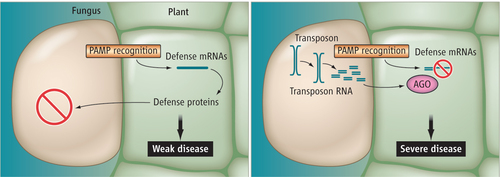Small RNA—the Secret of Noble Rot
See on Scoop.it – Virology and Bioinformatics from Virology.ca
Most of the characterized pathogen effectors are proteins, but Weiberg et al. (1) demonstrate that we can add RNA to the list of effectors with trans-kingdom activity. The new research involves Botrytis cinerea—a necrotrophic fungal pathogen that infects many plant species, including tomato and strawberry, on which it causes gray mold. Most notably, it is the noble rot that is so important for the production of exquisite dessert wines.
The new findings involve a class of small RNAs (sRNAs) that includes microRNAs and small interfering RNAs. These sRNAs are typically 20 to 24 nucleotides in length and they guide Argonaute (AGO) nucleases by Watson-Crick base pairing to coding or noncoding RNAs in either the nucleus or cytoplasm so that the targeted RNAs accumulate at a lower level than they would in the absence of the sRNA (3).
See on www.sciencemag.org
